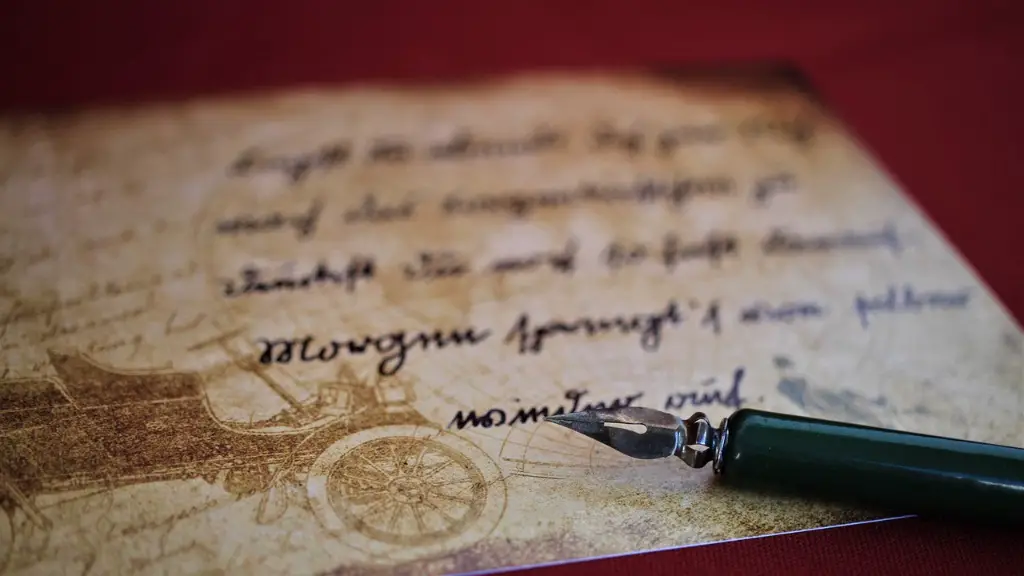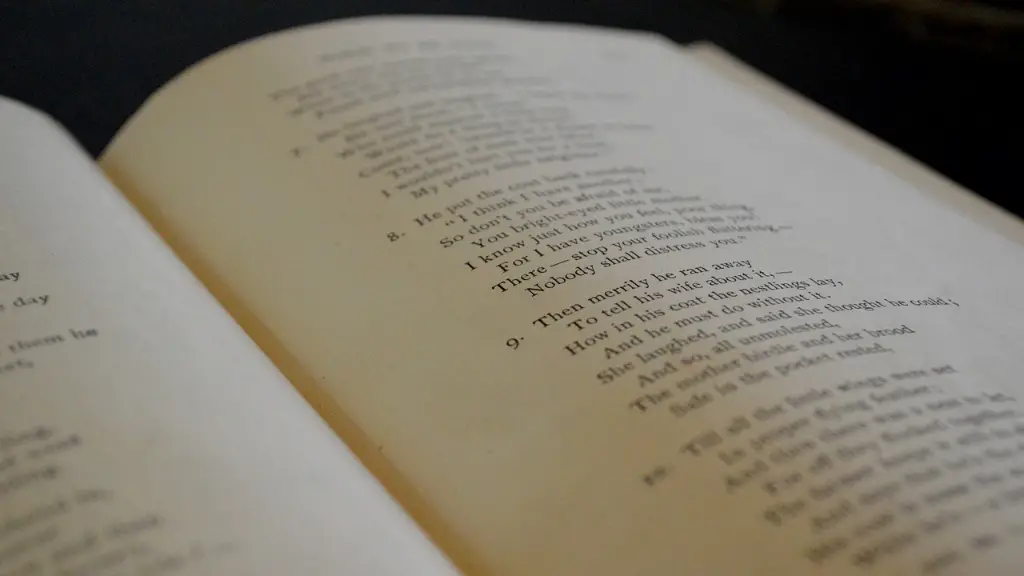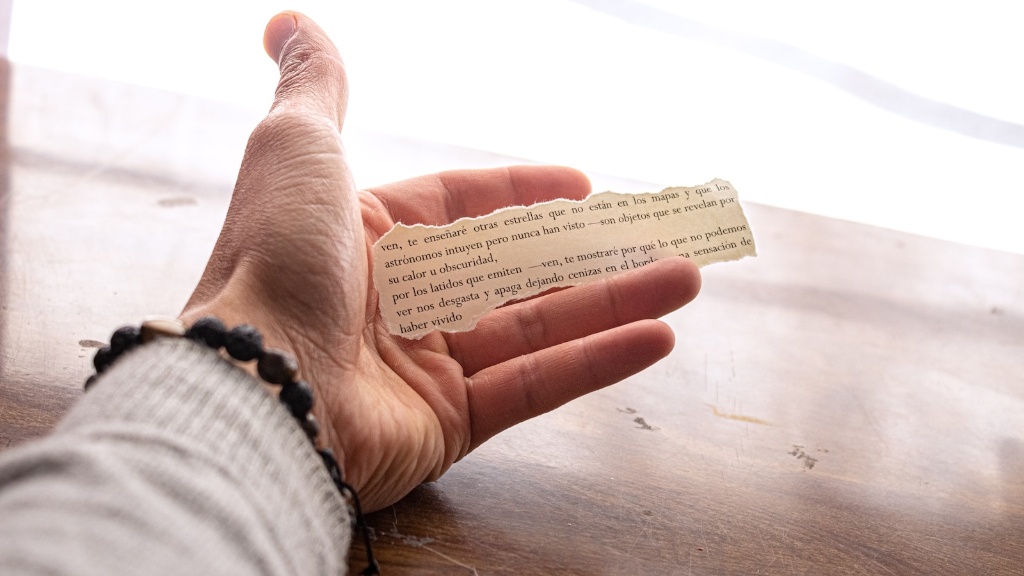Most people think of Emily Dickinson as a somber poet who rarely left her home. In reality, Emily was a complex person who experienced a range of emotions, including joy, laughter, and yes, sadness. It is this depth of feeling that is reflected in her poems, which often explore the darker side of human nature. While we can’t know for sure why Emily was sad, there are a few theories that could explain her melancholy moods. One possibility is that she was struggling with depression, which ran in her family. Another is that she was deeply affected by the death of her loved ones, including her father and her closest friend. Or it could be that she simply had a more sensitive nature and was more attuned to the pain and suffering in the world. Whatever the reason, Emily’s sadness is one of the things that make her poetry so compelling.
There is no one answer to this question, as Emily Dickinson’s sadness may have been due to a variety of factors. Some possible reasons for her sadness could include her reclusive lifestyle, her struggles with mental illness, or her difficult relationship with her family. Additionally, as a poet, Dickinson often wrote about dark and depressing topics, which may have also added to her sadness.
What was Emily Dickinson’s trauma?
There are many possible explanations for Emily’s withdrawal from society. Many point to the numerous losses of loved ones she suffered as a possible cause of pain. Agoraphobia, social phobia, lupus, epilepsy, and a vaguely defined eye ailment are several of the explanations offered today. It is difficult to say which, if any, of these explanations is correct. What is certain is that Emily was a very private person who experienced great sadness in her life.
Emily Dickinson was a prolific poet who wrote over 1800 poems in her lifetime. However, much of her personal life was shrouded in mystery, as she was a reclusive figure who spent the later years of her life largely isolated from the outside world. Dickinson died of natural causes at the age of 55 in 1886, and while there have been speculation and rumors surrounding her death, there is no evidence that she committed suicide.
What is unusual about Emily Dickinson
Dickinson’s poems are characterized by their unique style, which disregards many common literary rules. She experimented with capitalization and allowed sentences to run on. Her work was inspired by the rhythmic devices of religious psalms, but she commonly interspersed her own creative pauses within the stanzas.
There is no doubt that Emily Dickinson and Susan Gilbert had a very special bond. The scholarship on their relationship indicates that it was more than just a friendship, but a deep and lasting love affair. The two women lived next door to each other for many years and their close relationship was evident to everyone who knew them. Gilbert was married to Emily’s brother Austin Dickinson, but it is clear that the bond between the two women was stronger than any other relationship in their lives.
What were Emily Dickinson’s last words?
Emily Dickinson’s final words are both enigmatic and poignant. On the one hand, they could be interpreted as a literal description of her physical condition, as she was suffering from a disease that caused her to feel as though she was suffocating. On the other hand, the words could also be seen as a metaphor for her impending death, as the fog could represent the veil between life and death. Either way, Dickinson’s words offer a glimpse into her state of mind as she faced her final days.
One of the attitudes that Emily Dickinson holds about death is that it is not the end of life. Instead, she holds the belief that death is the beginning of new life in eternity. In the poem “I Heard a Fly Buzz when I Died,” Dickinson describes a state of existence after her physical death.
What personality type was Emily Dickinson?
As an INFP, Emily is likely to be a reserved, idealistic person who is adaptable to change. She probably enjoys being alone or with small groups of people, and prefers to listen to and contemplate ideas during discussions.
Hope is a very powerful thing. It is the thing that gives us the strength to keep going when everything seems hopeless. It is the light in the darkness that guides us to safety. Hope is the thing with feathers that perches in the soul and sings the tunes without the words. It is the never-ending song that gives us the courage to face each new day.
Were Emily and Sue in love
Sue and Emily had a very close, romantic relationship, even though they were unable to consummate it. Their love for each other was clear, and it is sad that they were not able to have a more physical relationship. Nonetheless, their bond was very strong, and they remained close friends until the end.
It is now widely assumed that the man to whom Dickinson was referring in her poem was Judge Otis Lord, a widower of her father’s generation who proposed marriage to Dickinson late in his life and hers (she died in 1886 at the age of 56). Lord was reportedly a kind and gentle man, and Dickinson was said to have been fond of him. However, she ultimately declined his proposal, opting instead to remain single and focus on her poetry.
Did Lavinia burn Emily’s poems?
In the decade following Emily Dickinson’s death, Lavinia Dickinson, the poet’s sister and companion, burned the entire cache of letters that the poet had received. This was done in accordance with Emily’s wishes. As a result, very few of Dickinson’s letters survive today.
The most famous last words are usually those that are said in moments of duress or high emotion. They are the words that are remembered long after the person has passed away. Here are 19 of the most famous last words of all time:
1. “I am about to die or I am going to die; either expression is used.”
2. “I must go in, the fog is rising.”
3. “It is very beautiful over there.”
4. “Looks like a good night to fly.”
5. “OH WOW.”
6. “I want nothing but death.”
7. “Money can’t buy life.”
8. “Either that wallpaper goes, or I do.”
9. “Die, I shall die, but that is all I shall do for Death.”
10. “I have offended God and mankind because my work did not reach the quality it should have.”
11. “France, army, Josephine.”
12. “Moose… Indian… ”
13. “Go away. I’m alright.”
14. “Kiss me, Hardy.”
15. “Now is the time for all good men to come to the aid of their country.”
How old was Sue Dickinson when she died
There is no one-size-fits-all answer to this question, as the amount of time needed to learn a new programming language can vary depending on the individual and the language itself. However, some basic tips to help you get started include studying the syntax and structure of the language, practicing with small coding tasks, and utilizing online resources and forums for help. With dedication and practice, it is possible to learn a new programming language relatively quickly.
There is no one right or wrong answer when it comes to managing your finances. What matters is finding what works for you and sticking to it.
There is a lot of advice out there when it comes to managing your finances. Some people swear by budgeting, while others find it too restrictive. Some people like to save first and then spend, while others prefer to pay their debts first.
The important thing is to find what works for you and then stick to it. If you can stay disciplined with your finances, you will be on your way to financial success.
What was the main message for Emily Dickinson?
Emily Dickinson is one of the most well-known poets in American history. What many people don’t know about her, however, is that she was a very private person who spent a great deal of time in seclusion. This allowed her to focus entirely on developing her poetry.
Dickinson’s poems addressed a wide range of topics, including emotional and psychological states such as loneliness, pain, happiness, and ecstasy; death, often personified; religion and morality; as well as love and love lost. While she didn’t share her work with many people during her lifetime, Dickinson’s poetry has resonated with readers for generations.
Finally, she ends up on a beach, where the mermaids (of her poem) call for her “Wait for me, I’m coming,” and she rows towards her destiny, or to happiness. It’s a beautiful ending to a beautiful show. Emily is free from the burden of fame or success; these matters are in her own hands now, to do with what she wishes.
Warp Up
There is no single answer to this question asEmily Dickinson’s sadness could have been caused by a variety of factors. It is possible that she was struggling with mental health issues, or she may have been grieving the loss of a loved one. It is also possible that she experienced a great deal of personal trauma in her life. Whatever the cause, Emily Dickinson’s sadness was likely very deep and complex.
There are many possible reasons for Emily Dickinson’s sadness. She may have been disappointed in love, or she may have been troubled by her own mortality. She may have also been affected by the death of her father and other loved ones. Whatever the reasons, her sadness was probably compounded by her reclusive lifestyle.





